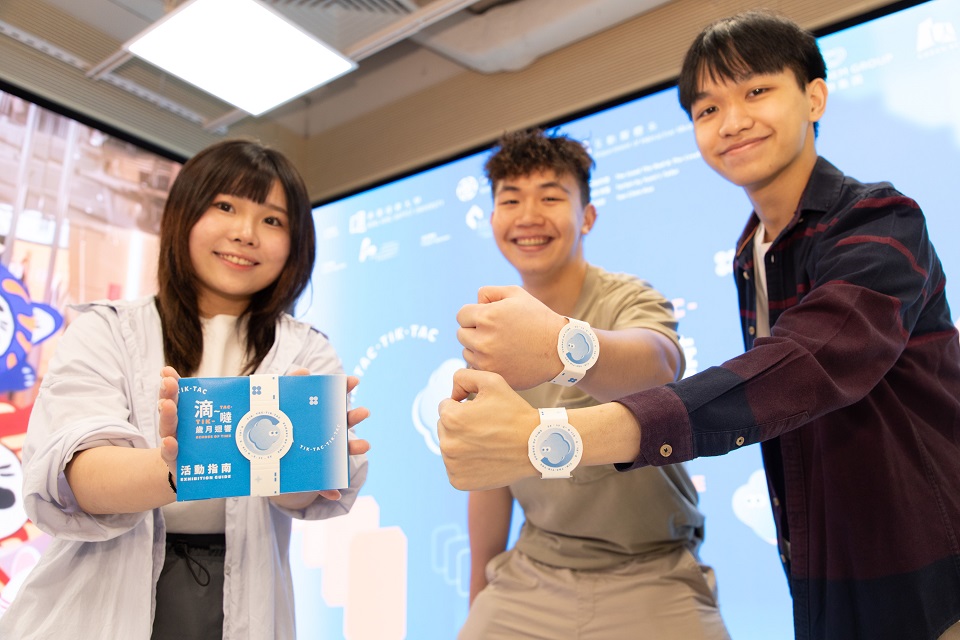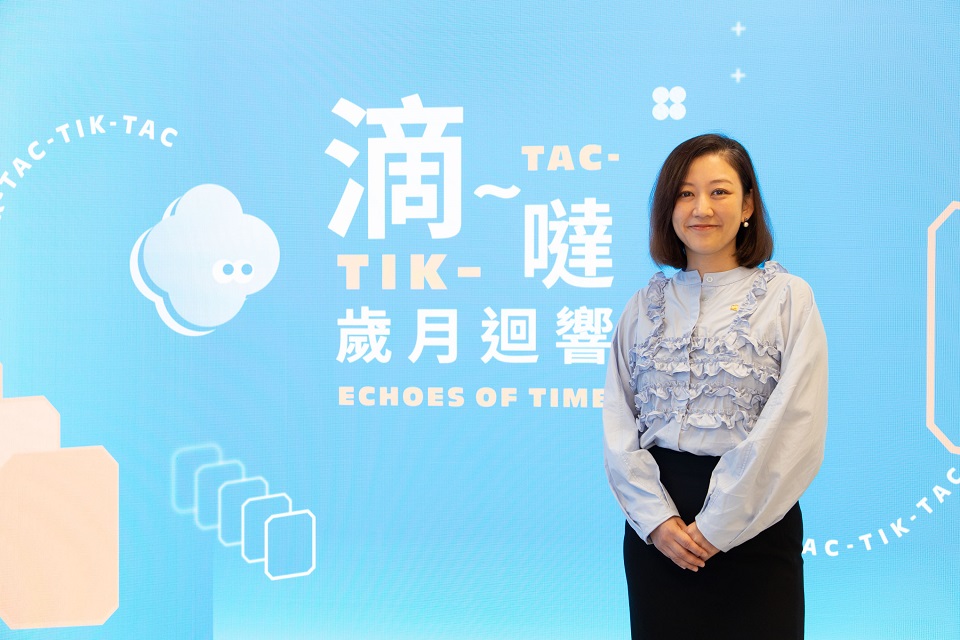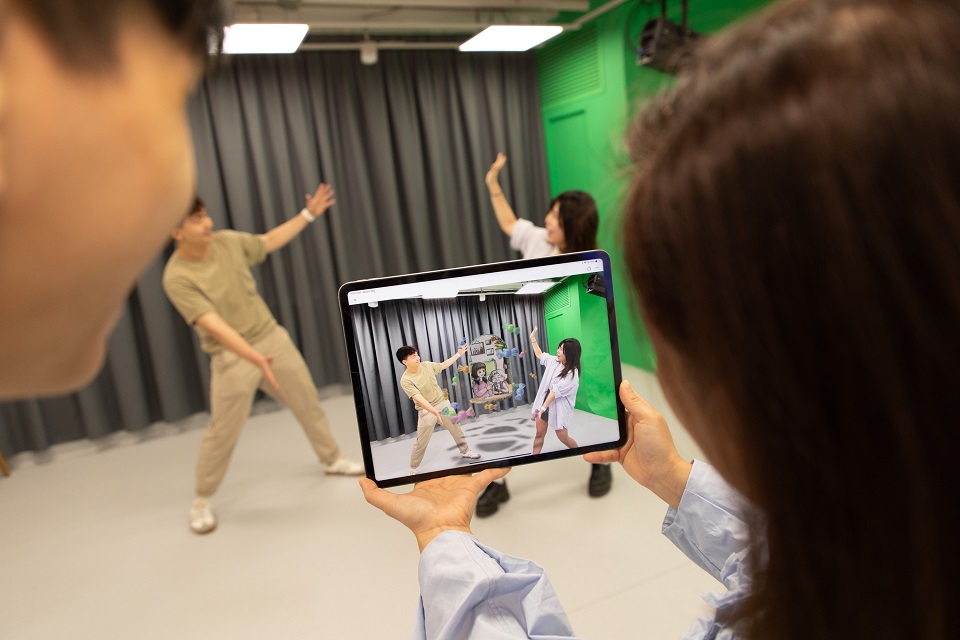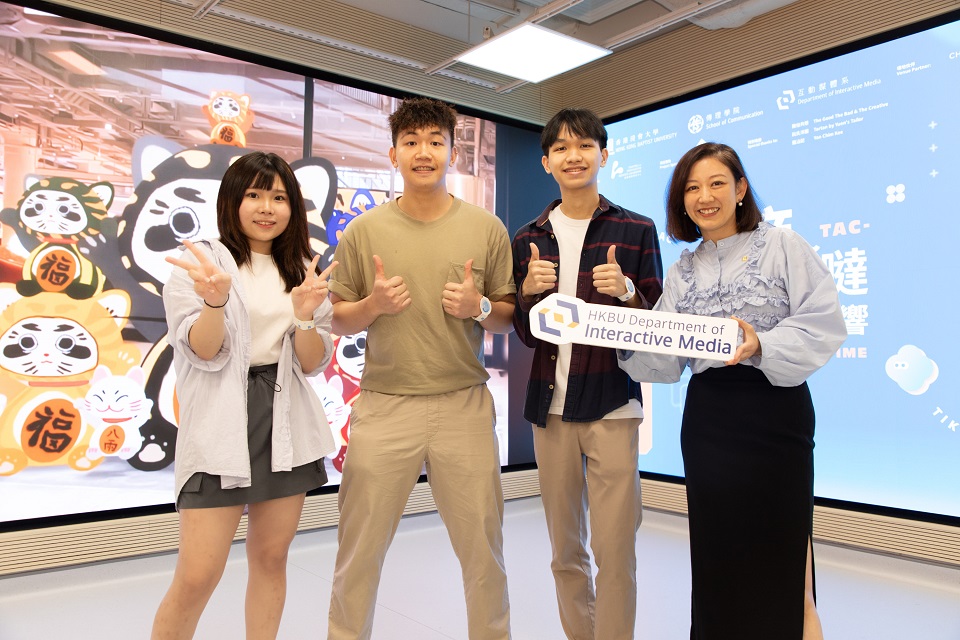Discover HKBU
Students develop interactive AR exhibition for Central Market
31 May 2024
In Hong Kong, time-honoured shops are often hidden gems that have served as witnesses to the lives and stories of people over the years, thereby becoming an important part of our cultural landscape. In its first-ever collaboration with the Central Market, the Department of Interactive Media (IMD) provides students with an opportunity to present the stories of traditional shops by creating animated and interactive works with the use of Augmented Reality (AR) and other technologies. The students’ works are showcased in an exhibition titled “Tik-Tac-Tik-Tac: Echoes of Time” held from 11 May to 16 June at the Central Market, promoting Hong Kong culture to the public.
Following its revitalisation, the Central Market, the city’s oldest wet market, is now home to numerous shops known for their rich Hong Kong cultural heritage. Sixteen HKBU students of the course “Location-based Storytelling and Game Design” visited the Market and interviewed the shopkeepers of ‘Yuen's Tailor’, ‘Yan Chim Kee’ and ‘Good Bad Creative’. Inspired by the stories of the shops, the students then applied AR technology to design location-specific exhibits.
The course is led by Ms Zoie So, Senior Lecturer of IMD and Director of the Bachelor of Communication (Hons) in Film (Animation and Media Arts Concentration) programme. She says: “This course aims at educating students to employ different media for creative storytelling in various scenarios. Through experiential learning, students deepen their understanding of Hong Kong’s culture and history. The collaboration with the Central Market further enriches students’ learning experience, while giving them with the chance to connect to the community.”
Integrating history, culture, art and technology, the interactive exhibition provides visitors with an engaging experience. To explore the virtual exhibits, visitors can first collect the exhibition guide and the “Tik-Tac” Watch at the Market’s entrance, and then they can point their smartphone cameras at the watch face to enjoy the creative content. In addition, visitors can visit different locations at the Market, scan the QR codes on the exhibition guide, and experience the integration of the virtual world and reality, as well as participate in interactive games.
Year 3 student Henry Ho and his team visited ‘Yuen's Tailor’, a shop that had provided customised tailoring services and kilts for British troops in Hong Kong before the city’s handover. During the interview with the shopkeeper, the student team found that each Scottish tartan pattern symbolises the region it belongs to. The team’s work, Tartan.walk, uses AR to display mannequins which illustrate the historical anecdotes of tartan and feature a Hong Kong-style tartan registered by ‘Yuen’s Tailor’. Henry says: “Throughout the creative process, we kept modifying our designs based on practical considerations such as the environment and foot traffic at the Central Market. This helped us understand how to achieve a balance between the design and the actual user experience.”
Also taking inspiration from the Scottish tartan were Leyton Ha and his team, who created an interactive game called Mystery of the Throne. The game highlights the uniqueness of tartan patterns through a fictional story about three families vying for a throne. “This is our first collaboration with external partners. From devising the story to mapping out the user experience and fixing technical glitches, my team and I applied meticulous attention to detail in the production, and we got to experience different phases in creating a project,” Leyton says.
Maneki-nekos (commonly known as ‘lucky cats’) are among the vast collection of vintage items from the shop ‘Good Bad Creative’. In view of this, Sze Yan-yan and her teammate gave life to the lucky cats by enlarging them into gigantic, animated figures in the realm of AR. Their creation, Wishes and Whiskers, is featured at the main entrance of the Central Market. “It was a remarkable moment when we saw our work come to life from scratch to realisation!” Yan-yan exclaims. “Thanks to AR technology, our creation is no longer limited to being displayed on a computer screen, but something people can interact with in their everyday life,” she adds.
When Coral Huang and Jasmine Yu visited the century-old shop ‘Yan Chim Kee’, the pair met a patron who made the journey to the store to buy coconut candies for their grandmother who had moved abroad. The encounter inspired the two students to depict a story about a grandmother and her grandchild in the work Candy Remembrance to connect the memories across generations.
According to Ms Zoie So, the project enables young creators to collect story ideas firsthand, design the works based on what touches their hearts, and interpret Hong Kong’s history and culture from their own perspectives. Regarding the application of AR technology, she says: “There are certain limitations in the use of AR in an exhibition, but it has the advantage of integrating imagined objects into real-world scenarios. AR has enormous potential in creating cultural and interactive experiences, with room for improvement of the related technologies in the future.”



